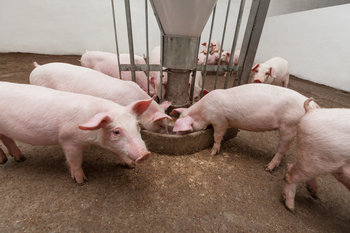Regulations take effect January 1, 2017
Schae Greenzweig
PigCHAMP
August is officially here, which means producers have less than five months to ensure that they’re prepared for the new regulatory changes related to the veterinary feed directive (VFD), taking effect on January 1, 2017.

Getty
There are a few record-keeping items that those involved in the pork industry need to be fully aware of before the VFD officially begins. Dr. Jennifer Koeman, DVM and Director of Producer and Public Health for the National Pork Board, outlined the importance of these regulatory changes in the article she wrote for PigCHAMP’s Benchmark magazine this spring.
Dr. Koeman stated the impending VFD “will affect not only pork producers, but veterinarians and feed mills as well.” She listed four specific regulations which will be enforced by the U.S. Food and Drug Administration (FDA).
· “The veterinarian issuing a VFD is required to keep the original VFD form; the feed mill/distributor and the producer (client) must keep a copy. These records can be in print or electronic formats.
· All parties must keep the VFD records for two years; one year for water prescriptions.
· Each VFD includes a specific expiration date for a specific group of animals. Any leftover feed cannot be fed to any animals without obtaining a new VFD.
· Any of these record must be accessible to FDA upon request.”
For more information and to stay up to date on the latest VFD information, visit Pork Checkoff's Antibiotic Resource Center.
Dr. Koeman’s full article can be accessed in the 2016 edition of Benchmark.